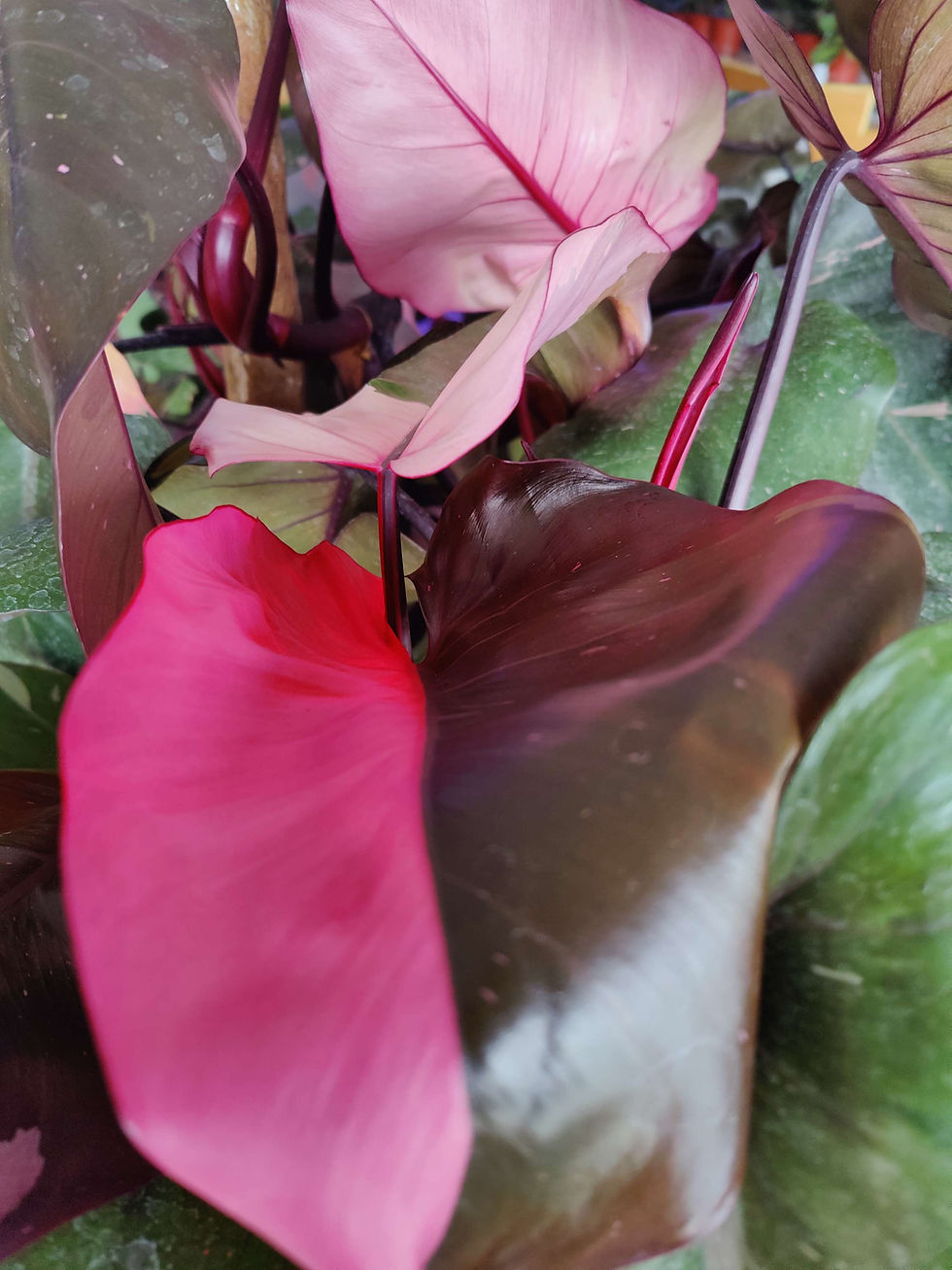Philodendron Pink Princess
A pink, royal, rarity, the Pink Princess Philodendron is a sight to behold. With vibrant pink hues and contrasting dark green leaves, this coveted plant makes a daring statement. It’s fairly uncommon to find in stores but not considered a ‘rare’ plant since it isn’t found naturally in the wild at all. In fact, the Pink Princess is a type of philodendron that has likely been cultivated (man-made) to produce the unique foliage. It’s an upward climbing plant and can grow quite quickly in the right conditions– with each new leaf displaying a completely different splattering of colors. The surprise of new growth makes this plant highly desirable and exciting to watch!
*Pet Friendliness - Not Pet Friendly*
Light:
Like other Philodendrons, the Pink Princess prefers medium to bright levels of light. It’s imperative to provide the plant with indirect light (aka no sun rays) since direct sunlight can burn the leaves. Typically, a location near an east or west facing window will be perfect for this plant. If the plant can “see” the sky, then it’s likely getting enough light.
Water
Allowing the Pink Princess to dry out partially between waterings is essential for the health of the plant. Specifically, allow the soil to dry about halfway down the pot– simply wiggle a finger into the soil to assess the moisture levels. Once you confirm it’s dry, go ahead and flush the soil with water. Allow water to drain out of the bottom holes of the pot (assuming there are holes!). And never allow the Pink Princess to sit in standing water. Since this plant can be sensitive, over watering can be a death sentence. Also keep in mind that inconsistent watering can lead to physical changes (like blemishes).
If your Pink Princess starts to get crispy brown leaf tips or new leaves open with washed out splotches, then it’s likely lacking moisture. Make sure it’s not too dry through the soil to rule out underwatering issues. Then increase the humidity around the plant. You can either use a humidifier or the pebble tray method.
Repotting
Normal for a philodendron, these plants tolerate a slight level of being root bound– and therefore, don’t need to be repotted often. In fact, we recommend you shy away from repotting unless it’s dire since this plant can be sensitive to changes. If your plant has stunted growth (and you’ve ruled out other potential factors that could have contributed) then it could be time for a repot. This is usually only necessary once every two years.
Other circumstances that may make you consider repotting include severe pest infestations and if the soil quality has degraded or is not retaining water. New, fresh, fertile soil can sometimes help plants that are otherwise struggling for no apparent reason. However, when you repot, just remember to only use a pot that’s appropriately sized (that’s 1-2 inches larger in diameter than the previous one). Plus, handling the roots gently will help ensure sustained plant health. More on the ins and outs of repotting here.
Extra Info
During the active growing seasons (spring and summer), your Pink Princess will need a boost with fertilizer. We typically recommend a monthly dose of a premium, nutrient-rich fertilizer.
Since the Pink Princess can be a bit of a princess, there are a few checks and measures to keep her happy. First, she likes higher levels of humidity (~ 50-80%) and a comfortable temperature (65-85°F). You can place her outside (in a shady, but bright spot) during the summer to get some extra humidity. While indoors, you’ll want to make sure Pink Princess is out of contact with vents, heaters, fireplaces, etc– basically the plant will not do well near any source that is drying or blowing air (hot or cold).
Issues
Despite its beauty, there is only one drawback to the Pink Princess– that is, it does have the ability to revert. In this scenario, the new growth on the plant turns a burnt brown color and fails to produce any pink variegation. If this happens, you can try to trim off the stem where the new growth has reverted. In many cases, the plant will start to regrow with variegation (it is in its DNA after all!).
Returns & Insurance
In the event an item is damaged during shipment, a return or replacement will be offered. During this return process the customer will be required to submit pictures of the damaged item for review.
There is a five day "New Home" adjustment period is standard with all plant purchases. This period begins at the time of purchase and covers plants that have received "reasonable" care. Accidental death, heat damage, over watering, under watering, etc is not covered.

